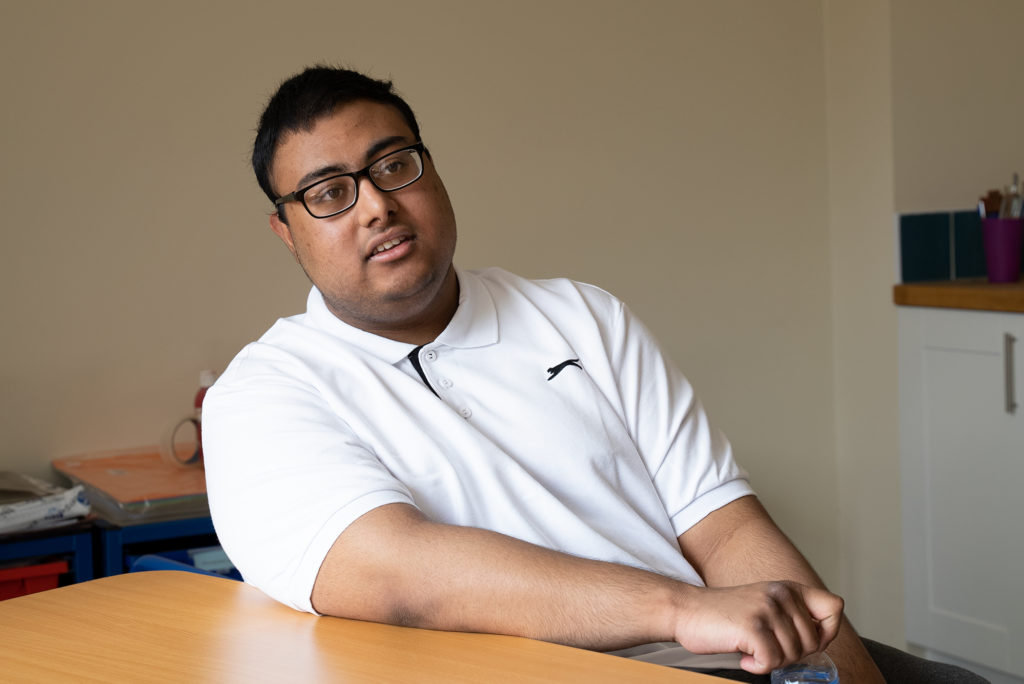Five top tips to make your community more inclusive
Have you ever thought about how disability-friendly your local cafes, shops and community centres are? When we make our community more accessible, people with disabilities can feel more included – here’s how to get started.
Did you know that over a third of disabled people say they’d feel more connected to their community if the public had greater awareness and understanding? But due to things like stigma and inaccessible spaces, disabled people end up feeling left out of normal life.
But together, we can change things for the better by making our communities more inclusive with these simple, everyday actions.
And remember – when in doubt, just remember the three steps: Think, Ask, Include!
How to communicate clearly
When you’re speaking to someone who has a disability, speak directly to them, as opposed to their support worker, carer, or guide. This is really important in making them feel included.
If you’re speaking to someone with a hearing impairment, or who needs to lip-read, try to speak clearly. If possible, make sure people can see your lips.
It’s a good idea to make sure you have large print and braille versions of information, like menus or guides, available. Remember, some people who are unable to read will also find it handy to use pictures.
If you’re up for learning a new skill, why not take a short course on basic British Sign Language? This will help you communicate with the millions of people in the UK who are Deaf or hard of hearing that use sign language. Sense Sign School is a great place to start!
“If I’m going to a café or restaurant, a large print or braille menu would be extremely helpful. Staff asking me what my accessibility needs might be would go a long way too.”
Lucy
Make spaces easy to navigate
Look around the spaces you use and visit. If you hadn’t been there before, would you find it straightforward to find your way around? Is there any information on hand to signpost people, and is it easy to see and read? Are the toilets clearly signposted? Make your space more accessible by making it easy to work out where to go.
It’s also important to check how much space there is to move around. If you were using a wheelchair, would there be enough room between furniture? Check for tables, chairs and other obstacles that might be in the way, and don’t forget to check if anything’s blocking the pavement outside.
Finally, another good tip is to make sure this accessibility information is on your website, and up to date. This helps people know what to expect before they visit.

“I find it hard to get around places and if there’s not enough space I can trip up. More walking space would really help.”
Saihan
Think about lighting
Mood lighting is nice for some and can create a cosy atmosphere, but for people with visual impairments, a well-lit space is best. Dark spaces can make it difficult to read signs or information.
It’s also important to be mindful of overly bright spaces too. In particular, fluorescent lighting and glare from neon lights can cause sensory overload, so try to find a balance that works for everyone.
Try using lamps to create a softly-lit environment, and check if you can increase how much daylight the space gets.
“Small changes can make a big difference.”
Natalie
Watch the volume
If you’re playing music, remember that some people can be sensitive to loud noise – in fact, it’s a common part of living with autism and can cause pain. Try to keep any music turned down and monitor the background noise in your space.
To make sure people using hearing impairments can be involved in the conversation, set your space up for induction loops, which hook up to people’s hearing aids.
“Having music turned down just a little bit can make me feel a lot more welcome.”
Saihan
Start the conversation
There are 14 million people with disabilities in the UK, but did you know that nearly half of non-disabled people said they don’t think they’ve got anything in common with them? What’s more, over a quarter say they’ve avoided having a conversation with a disabled person.
Mindsets like this cause chronic loneliness in people with disabilities. But by taking small actions, you can help disabled people feel more welcome.
Have a conversation with your friends, family, neighbours or children about disabilities. Ask about their preconceptions and what their barriers might be to friendship with a disabled person, and see if you can raise awareness about disability and loneliness.
“Reach out and learn what disabled people think and need to feel more welcome and included.”
Emma
